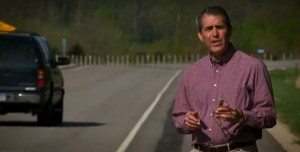 One challenge TV reporters face is deciding what details belong in a story. Too many and the story bogs down. Too few and it loses impact. What works in a story is “telling” detail: information that conveys a basic truth about a character or situation.
One challenge TV reporters face is deciding what details belong in a story. Too many and the story bogs down. Too few and it loses impact. What works in a story is “telling” detail: information that conveys a basic truth about a character or situation.
Think about the difference between two stories about the aftermath of a tornado. One includes comments from “a long-time resident;” in the other we hear from a person who is named and we learn exactly how long she’s lived there. Which one better conveys a real sense of loss? Without details, a story sounds and feels generic and therefore has less impact.
Sometimes, the details are clearly visible in the video and don’t need to be repeated in narration. But if the video is unclear or unavailable, carefully chosen words can fill the gap. This story by KARE reporter Boyd Huppert shows how it’s done.
Did you notice these details?
1. Where the children were sitting. Not just their location in the car but the specific type of seats they were strapped into.
2. What the father did. Not just his work but how he met his wife and where he volunteered. Also notice the rule of 3s in action.
3. How much the chain and clip cost. Spelling that out makes the cost of the accident really hit home. Notice that Boyd saves that particular detail for the end.
And did you notice the parallel parking in the trooper’s first sound bite? Never has the word “yeah” been more laden with meaning.
I’m sure someone will comment that it’s easy to include details when you get five minutes to tell a story. True enough. But what takes skill is choosing the right details to make characters real and emotion hit home. And that skill, even used just once in a 1:10 package, can improve any story of any length.
A couple of additional points about this story. It’s a great case study in the value of follow-ups. The accident on Memorial Day weekend three years ago had been big local news. The follow-up shared a valuable safety lesson just before the holiday.
Also, Boyd says he had tracked down the cell phone number of the woman who was driving the truck with the trailer and made the call expecting the usual hang-up or no comment. “I was stunned when she agreed to the interview,” he says. “It’s why we always ask, isn’t it?”
Originally posted at NewsLab
